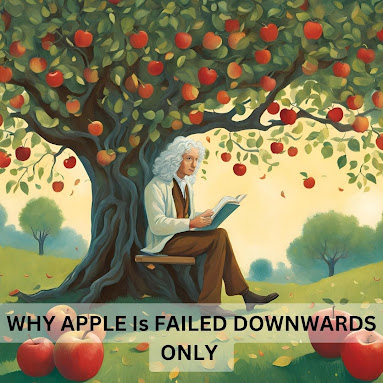Introduction : Sir Isaac Newton, a name synonymous with scientific genius, was pivotal in transforming our understanding of the natural world. Among his many groundbreaking contributions, the discovery of gravity stands out as one of the most important milestones in science. This invisible force not only keeps us grounded but governs the movement of celestial bodies. The story of how Newton discovered gravity is one of curiosity, observation, and profound insight.
The Story of the Apple The tale of Newton and the apple is one of the most well-known anecdotes in the history of science. According to popular legend, Newton was sitting in the garden of his childhood home in Woolsthorpe Manor when he observed an apple fall from a tree. While this event is often dramatized as a sudden epiphany, it was actually a moment that sparked deep contemplation rather than immediate revelation.
Newton began to question why the apple always fell straight down and not at an angle or sideways. This simple yet profound observation led him to wonder if the same force that caused the apple to fall could extend far beyond the orchard and influence the Moon and other celestial bodies.
Formulating the Concept of Gravity Newton’s exploration of gravity did not happen in isolation. He was already well-versed in the works of great scientists such as Galileo Galilei, Johannes Kepler, and René Descartes. Galileo had shown that objects fall at the same rate regardless of their mass, while Kepler's laws described planetary motion but did not explain why planets orbited the way they did. Newton sought to find the unifying principle that connected these observations.
After years of study and mathematical analysis, Newton concluded that a force must act between any two masses, attracting them to one another. He postulated that this force diminishes with distance but is proportional to the masses involved. This became the foundation for his theory of universal gravitation.
The Mathematical Breakthrough Newton’s development of calculus played a crucial role in formalizing the concept of gravity. Although Newton did not publish his work on calculus during this time, he used what he called “fluxions” to calculate changing rates—an essential tool for understanding the dynamics of planetary motion.
In 1687, after years of intense work and correspondence with fellow scientist Edmund Halley, Newton published his magnum opus, Philosophiæ Naturalis Principia Mathematica, often referred to as the Principia. This monumental work laid out the mathematical framework for his laws of motion and the law of universal gravitation:
Law of Universal Gravitation: : Every particle of matter in the universe attracts every other particle with a force that is directly proportional to the product of their masses and inversely proportional to the square of the distance between their centers.
The equation, expressed as F = G(m1 * m2) / r^2, where F is the force of attraction, G is the gravitational constant, m1 and m2 are the masses, and r is the distance between them, revolutionized how we understand interactions between bodies
Implications for Astronomy :
Newton’s discovery had profound implications for astronomy and our comprehension of the cosmos. Before Newton, Johannes Kepler’s laws described how planets moved in elliptical orbits, but the underlying cause remained a mystery. Newton’s law of gravitation provided the ‘why’ behind Kepler’s observations, demonstrating that the gravitational force between the Sun and the planets keeps them in orbit.
This theory also explained why the Moon orbits the Earth and why tides occur due to the gravitational pull of the Moon and the Sun. For the first time, there was a unified framework that applied both to falling apples and to the movement of planets millions of miles away.
Verification and the Role of Experimentation :
Newton’s theories were groundbreaking but required validation. Over the years, observations confirmed his predictions. One of the significant validations came with Halley’s Comet. Edmond Halley, who had urged Newton to publish the Principia, applied Newton’s laws to predict the return of the comet that now bears his name. When it reappeared in 1758, as Halley had forecasted, it was an undeniable proof of Newtonian mechanics at work.
Impact on Modern Science :
Newton’s discovery of gravity was more than just a theoretical breakthrough—it became the cornerstone of classical mechanics. His work laid the groundwork for centuries of scientific exploration, influencing figures such as Albert Einstein, who would later refine our understanding of gravity through the theory of General Relativity.
Newton’s contributions extend beyond the study of gravity. His work in optics revealed the true nature of light and color, and his development of calculus provided tools that are still indispensable in engineering and physics today.
Legacy :
Newton’s insights into gravity marked the dawn of a new era in scientific thought. His rigorous approach to observation and mathematical proof set new standards for scientific inquiry. Despite facing challenges, including periods of intense isolation and academic rivalry, Newton’s work has left an indelible mark on human knowledge.
Isaac Newton passed away in 1727, but his legacy endures. His discoveries remind us that even the most ordinary of moments—like watching an apple fall—can lead to the most extraordinary realizations. His life and work exemplify the power of curiosity and the far-reaching impacts of asking “why.”
Conclusion : Isaac Newton’s discovery of gravity transformed our understanding of the universe and established the principles that guide scientific inquiry to this day. His ability to connect simple observations with complex mathematics opened up new realms of knowledge and continues to inspire scientists, mathematicians, and thinkers around the world.


Post a Comment